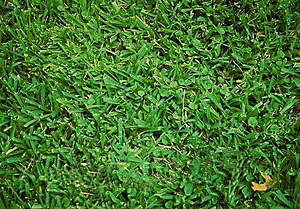
St. Augustine Grasses
St. Augustine grasses are native to the Gulf of Mexico region, the West Indies and Western Africa. St. Augustine is commonly found in coastal areas from Florida to California and tends to flourish in areas of high heat, sunlight and filtered shade. St. Augustine grasses tolerate a wide range of soil types. St. Augustine grasses have a medium to coarse texture and a dark-green to bluish-green appearance.
Floratam St. Augustine grass was released in the early 1970s by the Florida and Texas Agricultural Experiment Stations as a SAD virus and chinchbug resistant turfgrass (hence the name FLORada and TexasAM). Floratam is a vigorous, coarse textured St. Augustine grass variety. Stolons of Floratam are large, purplish-red in color with internodes averaging 3" in length. Leaf blades are wider and longer than common St. Augustine grass. Tests at A&M Univesity concluded it is the most drought-tolerant of all St. Augustine grasses. Floratam is not as cold tolerant as common St. Augustine, so preconditioning by use of Winterizer fertilizer (3-1-2 or 4-1-2 ratio) in the fall (October) is critical. Floratam may suffer freeze damage when temperatures fall below freezing for extended periods. |
||
|
||

